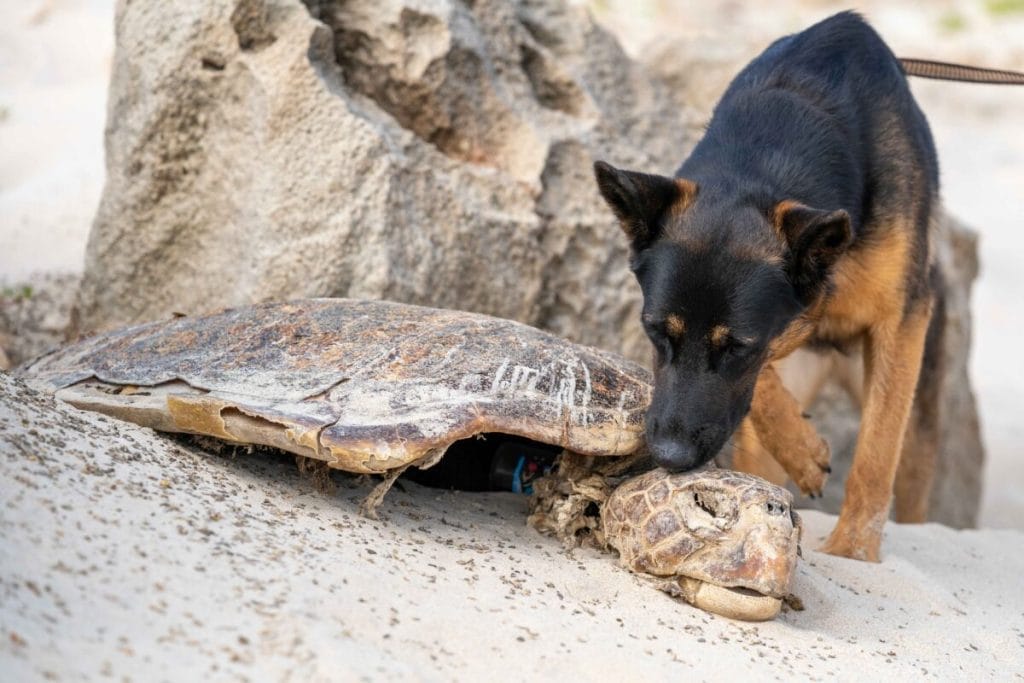Former Turtle Poachers Now Protecting Them — What Changed?

A decade ago, Roni Ramos hunted turtles on the beaches of Cabo Verde.
It wasn’t sport. It wasn’t greed. It was survival.
Turtle meat was food on the table, sometimes money in the pocket. Killing turtles was a way of life on the islands—normal, unchallenged, even expected.
Now? He walks the same beaches with a flashlight and a data sheet. He tags turtles instead of killing them. And he stops others from doing what he once did.
When tradition meets crisis
Locals in Cabo Verde have long used sea turtles—not just for meat, but for traditional medicine and cultural rituals. The trade still exists, especially in black markets.
A kilo of turtle meat sells for 3 to 12 euros, depending on the buyer. That price goes up when Cabo Verdean emigrants come home for holidays and ask for the meat. Some of it even ends up in the U.S. and France.
Even with conservation laws in place, the money is too tempting for some.
But here’s where the real twist comes in—when the very people who once drove the crisis become part of the solution.

Turning poachers into rangers
Conservation groups like the Turtle Foundation started hiring locals—especially former poachers—to patrol beaches and protect nesting turtles. Why? Because who knows the terrain, the turtle habits, and the poaching tricks better than someone who lived it?
Roni Ramos is now a camp coordinator, leading patrols across Boa Vista. He walks 4 kilometers a night during nesting season, from June to October. His team runs five camps, covering 31 kilometers of beach.
They check tags. Tag new turtles. Monitor nests. Stay up all night.
And it’s working.
This Hilarious Turtle Book Might Know Your Pet Better Than You Do
Let’s be real—most turtle care guides feel like reading a textbook written by a sleep-deprived zookeeper.
This one’s not that.
Told from the snarky point of view of a grumpy, judgmental turtle, 21 Turtle Truths You’ll Never Read in a Care Guide is packed with sarcasm, sass, and surprisingly useful insights.
And hey—you don’t have to commit to the whole thing just yet.
Grab 2 free truths from the ebook and get a taste of what your turtle really thinks about your setup, your food choices, and that weird plastic palm tree.
It’s funny, it’s honest, and if you’ve ever owned a turtle who glares at you like you’re the problem—you’ll feel seen.
The results are wild
In 2007, Boa Vista reported 1,253 illegal turtle killings.
In 2024? Just 20.
Loggerhead turtle nests? They’ve increased more than seven times.
Cabo Verde is now the third-largest nesting site for loggerhead turtles in the world—right after Oman and southeast Florida.
That’s not some vague conservation win. That’s measurable success tied directly to local action.

But it’s not all good news
While beachside poaching is down, at-sea captures by fishers haven’t dropped. In fact, from 2008 to 2019, turtle meat’s market value went up.
Laws exist, but enforcement is weak. Many poachers never pay their fines. Some get caught and come back.
Plus, industrial fishing deals like the EU–Cabo Verde Sustainable Fisheries Partnership are now letting dozens of EU vessels fish near the islands. Conservationists say this could increase bycatch and destroy years of turtle protection progress.
As if that wasn’t enough, turtles also face:
- Plastic pollution
- Climate change
- Coastal development wiping out nesting zones
Drones and dogs are now being used to catch poachers, but tech isn’t enough. Without serious enforcement and real consequences, some poachers keep playing the system.
What really stops poaching?
Not just laws. Not just tech. Not just awareness posters on a wall.
Jobs. Community. A better option.
Former poachers didn’t change because they were scared. They changed because someone gave them a reason to.
Conservation jobs now provide income, pride, and purpose. Tourism brings in cash, and locals are involved in it. Rangers like Ramos see their work pay off—more nests, more hatchlings, fewer killings.
It’s harder to kill something when you’ve spent years trying to protect it.

Final thought
This isn’t just a Cabo Verde story. It’s a reminder that local people aren’t the enemy in conservation. Often, they’re the key to fixing it.
If we want to save sea turtles, we need fewer outsiders giving orders, and more locals leading the charge—with the support, training, and trust to do it right.
Ramos used to see turtles as meat.
Now he sees them as miracles.
That’s the shift. That’s the hope.

About Author
Muntaseer Rahman started keeping pet turtles back in 2013. He also owns the largest Turtle & Tortoise Facebook community in Bangladesh. These days he is mostly active on Facebook.











